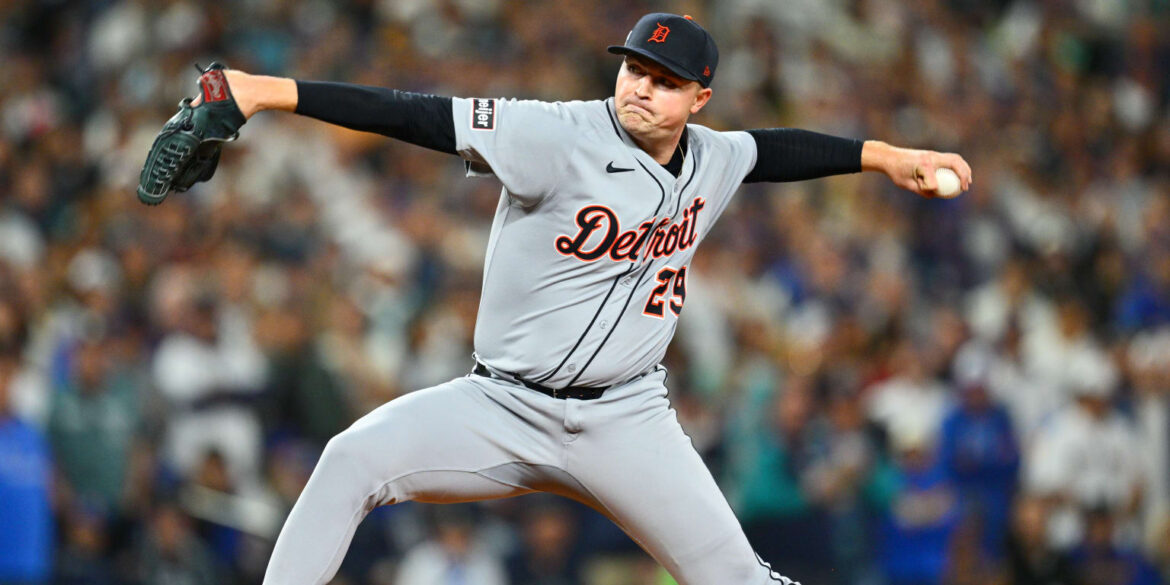Sixteen years ago, Dave Dombrowski stood at the podium at baseball’s Winter Meetings and had to explain the Curtis Granderson trade. The Tigers, with Dombrowski as team president and general manager, had just sent their All-Star center fielder and one of the most popular athletes in Detroit — drafted and developed by the Tigers — to the defending World Series champion Yankees in a three-team trade that also sent Edwin Jackson to Arizona.
The return package was a quartet of young players with 151 career MLB appearances combined, nine fewer games than Granderson played for the Tigers in 2009 alone.
It was a deeply unpopular deal in Detroit. Dombrowski not only anticipated the reaction, he understood it. But he didn’t dodge it, either. After three years out of the postseason, including a heartbreaking loss in an AL Central tiebreaker in 2009, Dombrowski needed to reallocate payroll — adjustments, as he called it — particularly with Justin Verlander two years away from free agency and due for an extension. Granderson had signed an extension just a year and a half earlier. It was the first time the Tigers had traded an established star since Dombrowski’s first season in Detroit in 2002.
As Dombrowski faced the media, he recalled a lesson he had learned from his old boss, former White Sox general manager Roland Hemond, who once traded former Cy Young Award winner LaMarr Hoyt for a shortstop prospect named Ozzie Guillen.
“You’ve got to be prepared anytime you trade the known for the unknown,” Dombrowski told reporters at the time. “You are going to be in a position where you have to be able to bear the consequences of that, because you’re going to get more criticism.
“It’s not easy, but you also understand it’s part of the business. I’m excited about the challenge, and I think these are good players. And I will also tell you that after making this, I think it sets up our organization for the future in a tremendous fashion.”
Four years later, as Max Scherzer collected his first Cy Young Award, that trade had a different look. It was an intersection for a franchise, and helped set up the Tigers for a run of four consecutive AL Central titles, two ALCS berths and a trip to the World Series. When the Tigers acquired Scherzer from the D-backs in the Granderson deal, they saw Scherzer as a potential All-Star, but could not have imagined they were getting a potential Hall of Famer. Dombrowski was proven right.
As current Tigers president of baseball operations Scott Harris embarks on a critical decision whether to trade or hold onto Tarik Skubal heading into his contract year, that moment comes to mind. But so does the situation that followed.
For Scherzer, that Cy Young Award in 2013 came in his next-to-last season of team control. The Tigers, having signed Verlander to another extension the previous offseason and with Miguel Cabrera nearing another extension, were not going to go to $200 million-plus to extend Scherzer.
The Tigers, looking to make another run for a World Series, did not entertain trading Scherzer, even after a much-publicized exchange of contract offers and media statements. Detroit prepared for Scherzer’s departure and bolstered their rotation for 2014 by trading for David Price with a year and a half of team control left, building a star-studded rotation that helped win a fourth consecutive division title and looked formidable heading into the playoffs before the Orioles swept them out of the Division Series.
That winter, Scherzer signed a seven-year, $210 million contract with the Nationals. The following summer, the Tigers used the compensatory Draft pick on slugging college outfielder Christin Stewart, who later played three seasons in Detroit, but he hit just 15 home runs. Seven weeks after that draft, the out-of-contention Tigers traded Price to Toronto for a prospect package that included Matthew Boyd and Daniel Norris. A few days later, the Tigers dismissed Dombrowski, who landed with the Red Sox and signed free agent Price to a seven-year, $217 million contract to the ensuing offseason.
Both the Granderson trade and the Scherzer non-trade ended up being right for the respective situations, despite being on opposite ends of the popularity scale. They also represent the choices facing Harris today, whether to listen to trade interest on Skubal and weigh a potential return package, or build up for another playoff run around him before he potentially hits free agency. Both choices come with risks and rewards that go well beyond public opinion.
